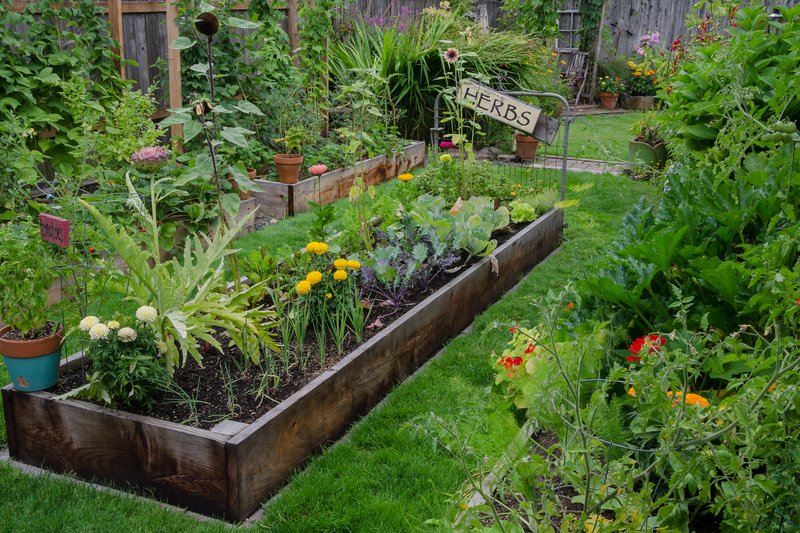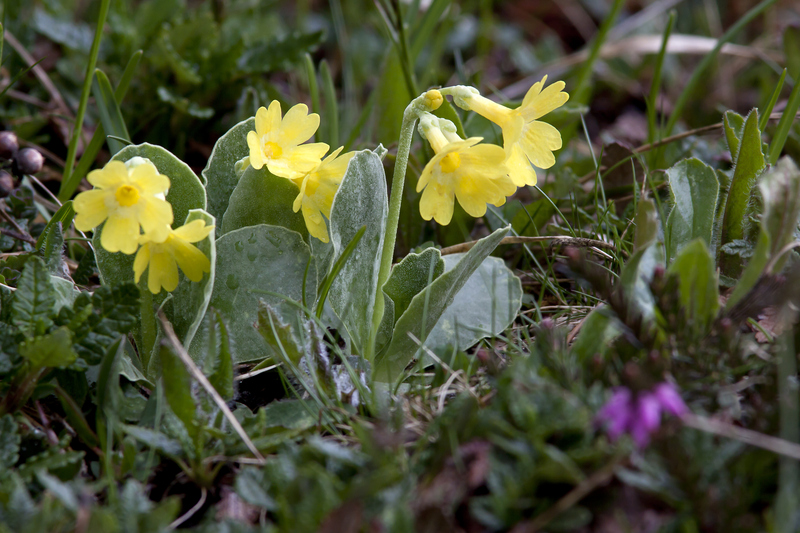Living Fences and Vertical Gardens to Transform Your Space into a Private Haven
In today's fast-paced urban environments, carving out a private retreat in your outdoor or indoor space is more important than ever. Living fences and vertical gardens have emerged as ingenious solutions for anyone looking to merge the beauty of greenery with practical privacy and style. Whether you have a sprawling backyard, a compact balcony, or a plain wall that's begging for life, these living design elements can dramatically transform your space into a secluded sanctuary. In this comprehensive guide, we'll explore the benefits, design ideas, plant suggestions, and maintenance tips for creating your own leafy oasis.
What Are Living Fences and Vertical Gardens?
Living fences are natural barriers formed by planting and training shrubs, hedges, bamboo, or climbers to create a lush, green screen. Unlike traditional wooden or metal fences, they add biodiversity, improve air quality, and offer year-round natural beauty.
Vertical gardens (also known as green walls or living walls) involve cultivating a variety of plants vertically on structures attached to walls or frameworks. These can be freestanding panels, modular systems, or creative arrangements on trellises and pallets. Vertical gardens are perfect for small spaces, adding privacy, insulation, and a vibrant focal point.

Why Choose Living Fences and Vertical Gardens?
- Privacy: Shield patios, balconies, or yards from prying neighbors or busy streets.
- Noise Reduction: Greenery absorbs and deflects sound, minimizing noise pollution.
- Air Purification: Plants filter pollutants and add oxygen to your environment.
- Temperature Regulation: Living walls and fences can cool spaces in summer and insulate in winter.
- Boosting Biodiversity: Attract pollinators like birds, bees, and butterflies to your urban habitat.
- Aesthetic Value: Add living art, texture, and color to otherwise dull spaces.
Planning Your Private Green Retreat
Designing a private haven with living barriers requires thoughtful planning. Below are the essential steps to create a flourishing green fence or wall.
Assess Your Space
- Sunlight: Observe how much light the area receives throughout the day and select plants accordingly.
- Soil and Drainage: Test soil for fertility and drainage, crucial for ground-planted living fences.
- Wind: Consider wind exposure; sturdy plants are better for windy areas.
- Available Area: Determine the dimensions you can dedicate for your living fence or vertical garden.
Choose a Style
Explore a range of living fence and vertical garden styles:
- Formal Hedges: Neatly clipped shrubs like boxwood or privet.
- Naturalistic Barriers: Layered or mixed planting for a wilder, softer look.
- Bamboo Screens: Tall, fast-growing, and evergreen privacy screens.
- Lattice or Trellis Walls: Ideal for training climbing plants on structures.
- Modular Vertical Gardens: Easy-to-install kits with pockets, panels, or towers for lush walls.
- Upcycled and DIY: Wooden pallets, gutters, or shoe organizers repurposed as plant holders.
Select the Right Plants
Choosing suitable species is critical for success:
- Evergreens: Year-round privacy with boxwood, arborvitae, cypress, or bamboo.
- Flowering Climbers: Add color with jasmine, clematis, or wisteria on trellises.
- Edible Options: Grow herbs, strawberries, or beans in a vertical garden for privacy and produce.
- Low-maintenance Plants: Succulents, ferns, and philodendrons suit vertical garden systems.
- Native and Pollinator-friendly Plants: Encourage wildlife and require less care.
Creative Living Fence Ideas
Hedge Fences for Year-round Privacy
Hedge fences create lush, resilient barriers that provide consistent screening. Consider dense evergreens like Leyland cypress or laurel for an instant wall of green. Mixed hedges can include flowering shrubs for seasonal color.
Bamboo Screens: Fast-growing and Elegant
Bamboo is an excellent option for a natural privacy fence. Choose clumping varieties to avoid aggressive spreading. Bamboo creates a tall, light-filtering screen perfect for patios or property lines.
Espaliered Trees as Living Dividers
Espaliering trains fruit trees or ornamental varieties along a frame, offering privacy, structure, and edible rewards. This technique works wonderfully along fences or walls for a living architectural feature.
Flowering Vine Trellises
Trellises adorned with fragrant clematis, honeysuckle, or star jasmine transform boundaries into floral displays while enhancing privacy.
Vertical Gardens: Green Walls with a Purpose
DIY Pallet Vertical Gardens
Upcycle wooden pallets by attaching landscape fabric and filling the spaces with small plants or herbs. Lean the pallet against a wall to create an affordable, rustic living wall.
Modular Panel Systems
Purchase or build modular panels with built-in pockets for easy planting and maintenance. These vertical garden systems are perfect for both small balconies and vast exterior walls.
Hanging Planters and Pocket Walls
Install vertical rows of hanging pots or felt pockets to maximize greenery without sacrificing floor space. This method is ideal for renters or those with limited space.
Vegetable and Herb Living Walls
Combine privacy with productivity by cultivating herbs, leafy greens, and strawberries in your vertical garden. Not only do they look beautiful, but they also offer fresh, organic produce steps from your kitchen.
Transforming Indoors: Living Walls for Interior Privacy and Style
Living walls aren't limited to outdoor designs. Indoors, they provide privacy screens, sound absorption, and striking focal points. Try arranging houseplants in wall-mounted frames or modular systems to separate home office spaces or create tranquil green corners in living rooms.
Step-by-Step Guide: Installing Your Living Fence or Vertical Garden
1. Set Your Foundation
- For ground-planted living fences, prepare soil with compost and check drainage.
- For vertical gardens, choose a sturdy structure or wall able to bear the weight and moisture.
2. Design Your Layout
- Sketch the placement of each plant for balanced coverage.
- Plan for mature plant sizes to avoid overcrowding.
3. Plant Selection and Installation
- Select a mix of species for seasonal interest and biodiversity.
- Install irrigation systems, especially for vertical gardens that dry out quickly.
- Plant at recommended spacing and water-in thoroughly.
4. Maintenance and Care
- Regular watering, especially during establishment.
- Pruning to maintain shape and promote growth.
- Feeding with balanced fertilizers as needed.
- Inspecting for pests and disease, and acting promptly.
Expert Tips for a Stunning Private Haven
- Layering is key: Use a combination of tall and low plants for a multi-dimensional, lush effect.
- Mix textures and colors: Combine glossy leaves, soft grasses, and vibrant blooms for visual interest.
- Include lighting: Highlight your living wall or fence at night with soft LED or solar landscape lights.
- Add water features: The sound of a small fountain can enhance tranquility and mask noise.
- Think about seasonality: Plant a mix of evergreens and deciduous species for interest all year long.
Challenges and Solutions in Living Green Design
While living fences and vertical gardens offer countless rewards, they come with unique challenges:
- Watering: Vertical gardens may need frequent irrigation; automate with drip systems when possible.
- Plant Choice: Incorrectly chosen plants may not thrive; consult local nurseries for region-specific advice.
- Weight: Ensure structures are strong enough to support mature plants and wet soil.
- Maintenance: Regular pruning and pest management are crucial for thriving green walls and fences.
Sustainable Benefits: The Eco-Friendly Impact
- Energy Efficiency: Green walls and living fences insulate buildings, reducing energy costs.
- Stormwater Management: Vegetation filters and slows down rain water, reducing runoff.
- Improved Mental Health: Proximity to greenery significantly boosts well-being and reduces stress.
- Wildlife Corridors: Living designs support urban biodiversity, providing food and shelter for wildlife.

Popular Plant Choices for Living Screens and Vertical Gardens
- Bamboo: Provides fast, tall screening; ideal for immediate privacy.
- Boxwood: Traditional, easily shaped hedge plant.
- Photinia: Vibrant red new foliage creates visual interest.
- Star Jasmine: Fragrant, glossy-leafed climber for trellises.
- Boston Fern: Thrives in moisture-rich vertical walls, especially indoors.
- Pothos & Philodendron: Hardy, cascading plants for vertical frames.
- Succulents: Drought-tolerant and colorful choices for sunny vertical installations.
Conclusion: Transform Your Space into a Private Haven with Living Fences and Vertical Gardens
Whether you seek solitude from neighbors, wish to boost your home's aesthetic, or simply want to connect with nature, living fences and vertical gardens provide innovative, eco-friendly solutions. They not only grant privacy and tranquility but also offer a lush backdrop for memorable outdoor moments and improved well-being. With careful planning, the right plant choices, and regular care, you can transform any space into a secluded, vibrant retreat--a true private haven where beauty and function grow together.